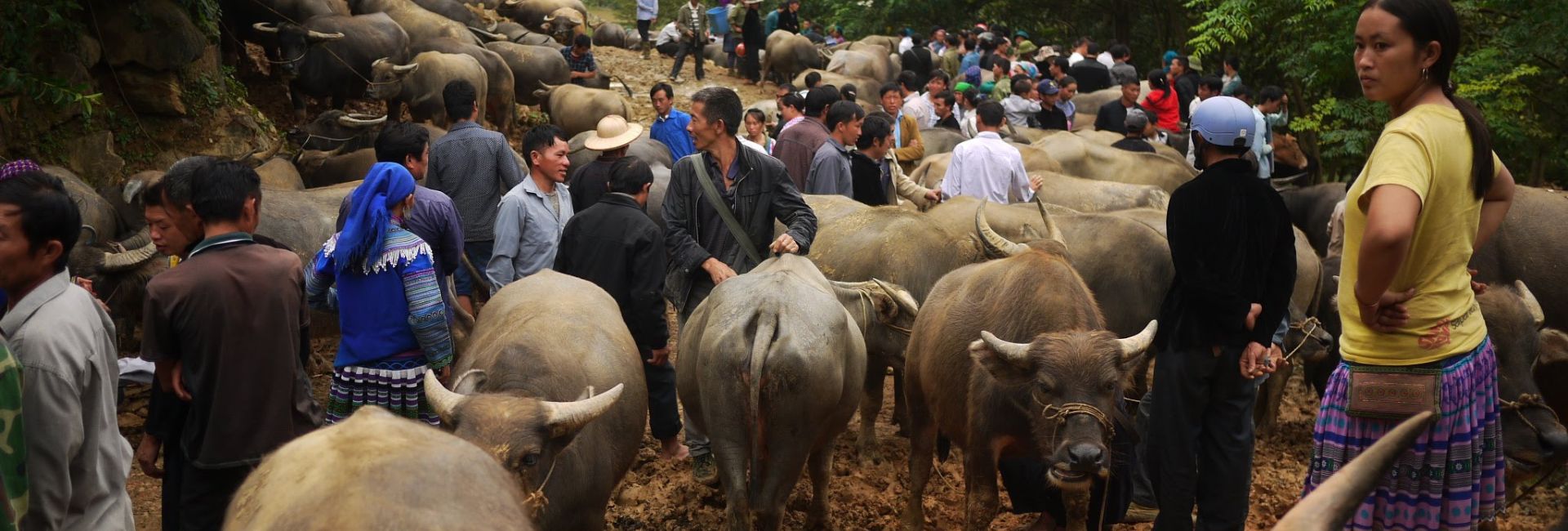Sapa in January transforms into a mesmerizing winter destination, offering travelers a unique perspective of Vietnam’s northern highlands. While Vietnam in January typically experiences mild temperatures in most regions, Sapa stands apart with its distinctive mountain climate. This destination showcases a remarkable contrast to the tropical imagery typically associated with Vietnam, presenting you with misty mountains, possible snowfall, and rich cultural experiences that make winter visits particularly special.
Here is what you will find in this travel blog:
- Sapa Vietnam weather in January
- Is January a good time to visit Sapa?
- Things to do in Sapa in January
- Suggested itinerary in January in Sapa
- Combine Hanoi – Sapa – Halong Bay – Ninh Binh to experience the best Northern Charm Vietnam
- Tips for visiting Sapa in January
Sapa Vietnam weather in January
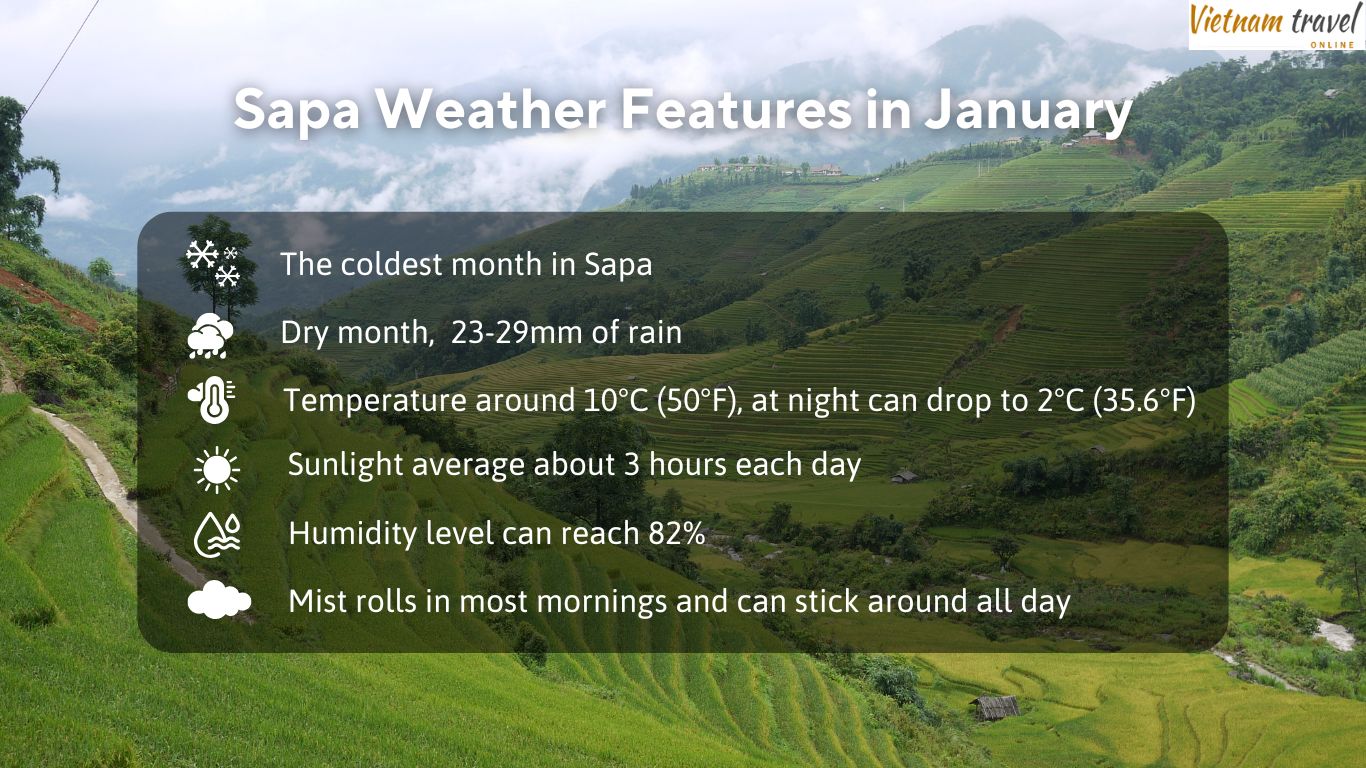
January shows you Sapa’s coldest face, with temperatures that might surprise you for a tropical country. During the day, the temperature usually stays around 10°C (50°F). When the sun goes down, you’ll feel a big change – temperatures can drop to 2°C (35.6°F) or even lower.
The town only gets about 3 hours of sunshine each day, which explains why it stays so cool. In really cold years, you might even catch something rare – snow in Vietnam!
January is actually one of the drier months in Sapa, with only about 23-29mm of rain. However, the town’s humidity level can reach 82%.
The most striking feature of Sapa’s January weather is its famous fog. The mist rolls in most mornings and can stick around all day. This thick fog wraps around the mountains and valleys like a soft blanket, giving Sapa its nickname “The Misty Town.”
The weather here changes a lot throughout the day. You might wake up to thick fog, see sunshine by lunch, and then watch frost form in the late afternoon. This mixing of weather conditions creates beautiful scenes but also means you need to be prepared for quick changes.
Is January a good time to visit Sapa?
January welcomes visitors to Sapa with a distinctive winter atmosphere that sets it apart from other months. The cold temperatures and clear skies create perfect conditions for photography, while the smaller crowds allow for a more intimate experience of local life. This winter period offers both challenges and unique opportunities that make your visit memorable.
What’s great about January visits:
- Witness rare snowfall events that transform Sapa into a winter wonderland
- Experience clear mountain views on days without fog
- Try seasonal winter foods and drinks
- Take pictures of frost-covered landscapes
- Join unique local winter and early spring festivals
- Explore hiking trails without summer heat and humidity
- Meet locals in their colorful traditional winter clothing
- Visit bustling winter markets with seasonal products
What’s challenging during the January’s visit to Sapa:
- Temperatures can drop below freezing at night
- Thick fog might limit the visibility of mountain views
- Some hiking trails become slippery with frost
- Need to pack extra winter clothing
- Limited outdoor dining options
- Early sunsets restrict daytime activities
- Remote villages might be harder to access
- Cold weather may affect electronic devices
Things to do in Sapa in January
Experience the famous mist
Sapa’s nickname “Misty Town” comes alive in January. Early mornings bring thick mist that flows through the valleys like a gentle river. You’ll see it wrap around mountain peaks and float between buildings. The mist softens the sharp edges of rocks and mountains, turning the whole town into what looks like a painting.
The best spots to watch the mist are: Ham Rong Mountain viewpoint, O Quy Ho Pass, Fansipan cable car ride, Cat Cat Village overlook.
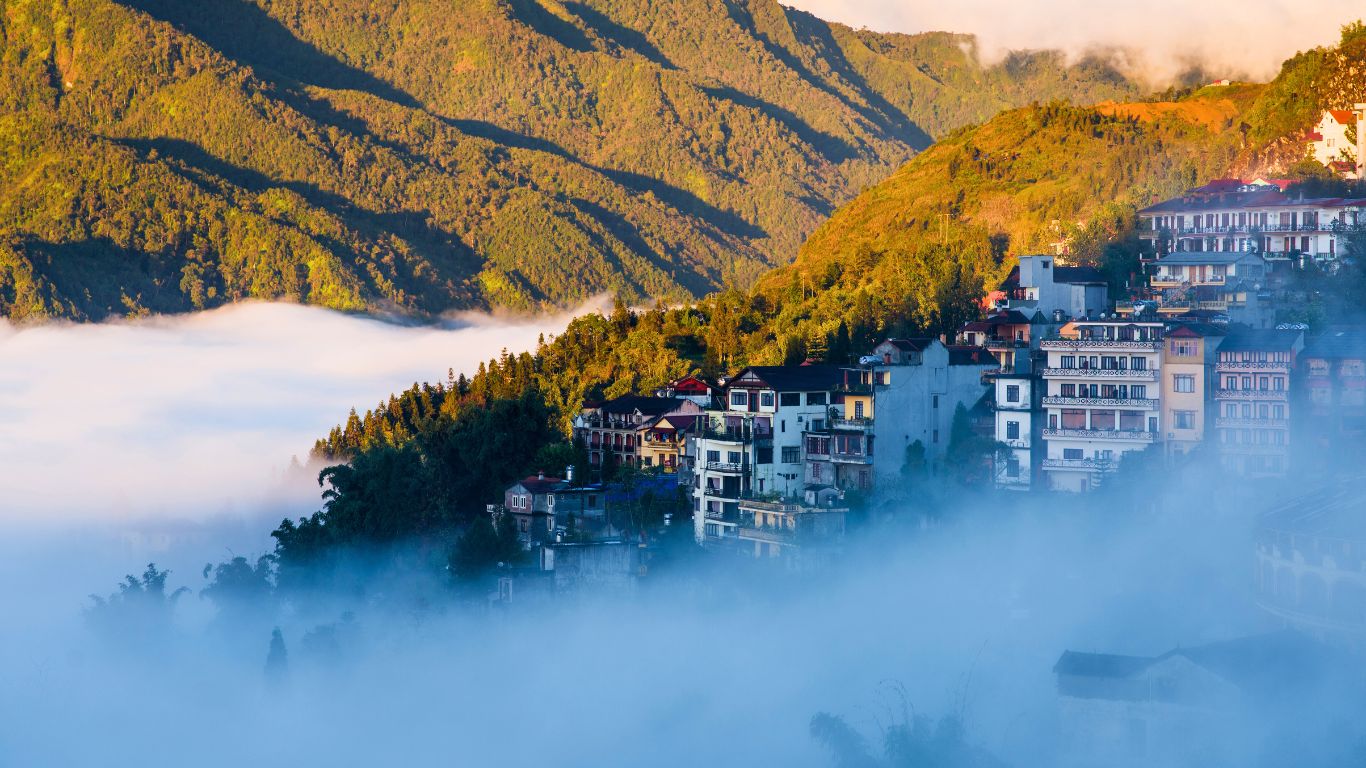
See the early cherry blossoms
Late January brings the first cherry blossoms to Sapa, earlier than most places in Vietnam. You’ll find four different types here:
- Sapa cherry blossoms – the most common variety
- Yunnan cherry blossoms – known for their deep pink color
- Cat cherry blossoms – featuring delicate white petals
- Apricot cherry blossoms – with light pink blooms
Each type blooms at slightly different times from late January through February, creating waves of pink and white across the landscape. The best viewing spots include the Sapa town center, Ham Rong Mountain, and the road to Silver Waterfall.
Try local winter foods
January’s cold weather makes Sapa’s hot dishes taste even better. Here’s what to try:
- Thang Co – a traditional H’mong hot pot made with horse meat (a local specialty)
- Trau Gac Bep – smoked buffalo meat that’s perfect for cold days
- Lau Ca Hoi – salmon hot pot with fresh mountain vegetables
- Com Lam – rice cooked in bamboo tubes
- Xoi Ngu Sac – colorful sticky rice that’s both pretty and tasty
- Ruou Tao Meo – warm apple wine made by local farmers
- Banh Hat De – hazelnut cakes that go perfectly with hot tea
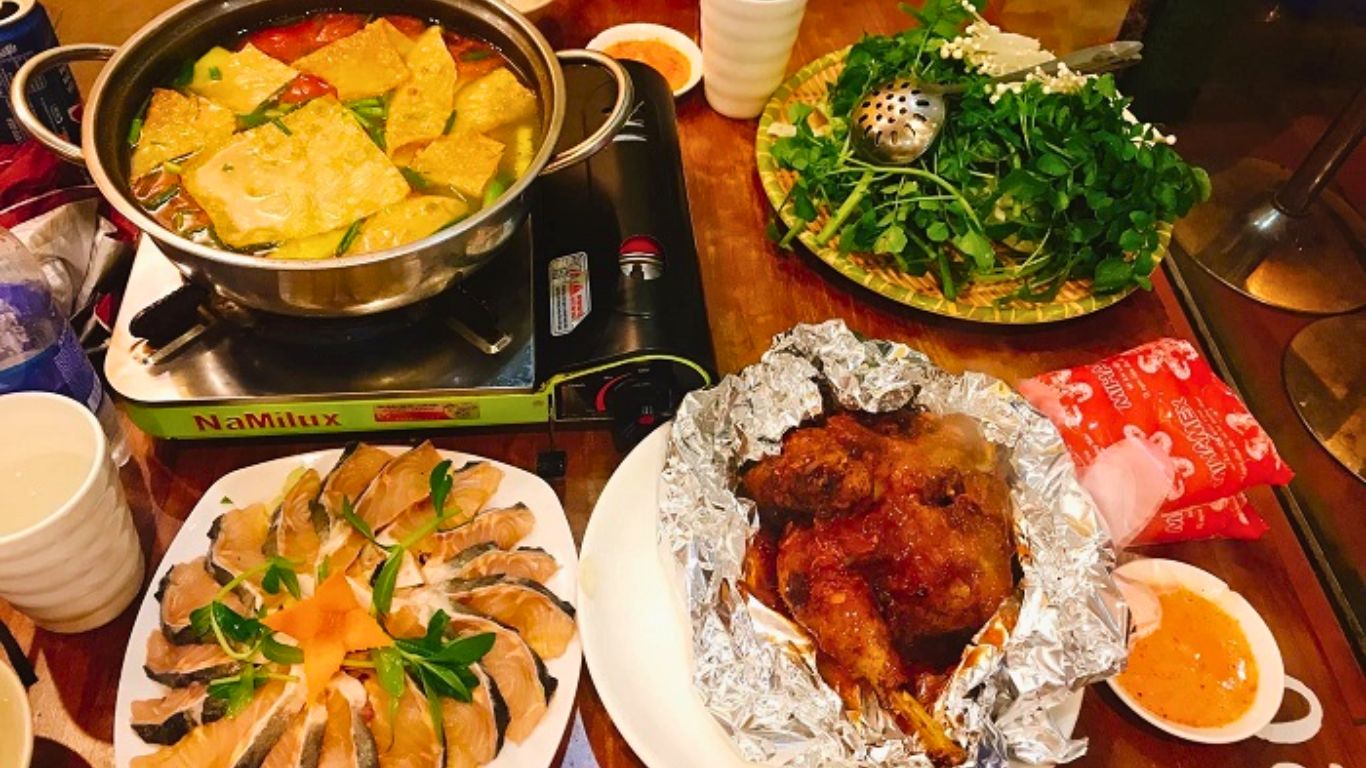
Visit the iconic Fansipan peak
Take the modern cable car system to reach Vietnam’s highest mountain peak. The 15-minute ride offers spectacular views of the Hoang Lien Son mountain range. At the summit, explore the extensive Buddhist temple complex while surrounded by winter mist.
The observation deck provides 360-degree views of the surrounding mountains, and on clear days, you can even spot distant peaks in China. Remember to visit early in the morning for the best chance of clear skies.
Explore Ham Rong Mountain gardens
Located in the heart of Sapa town, Ham Rong Mountain offers well-maintained walking paths through beautiful orchid gardens. The mountain features multiple viewing platforms where you can watch the sunrise over the valley.
Visit the ancient stone garden, walk through the cloud yard, and climb to Heaven’s Gate for panoramic views of Sapa town below. Local guides can explain the various orchid species and their significance in H’mong culture.
Experience Silver Waterfall
Silver Waterfall creates a stunning natural spectacle during January, when ice formations often appear around the cascade. The 200-meter waterfall flows year-round, and the viewing platform offers excellent photo opportunities.
The surrounding area features well-maintained paths with safety railings, making it accessible even in winter conditions. Local food vendors sell hot drinks and snacks near the entrance, perfect for warming up during your visit.
Discover Cat Cat Village
Located just 3 kilometers from Sapa town, Cat Cat Village provides insight into traditional H’mong life during winter. Watch local craftsmen create traditional textiles using winter hemp crops, visit the old hydroelectric station built by the French, and see how villagers preserve food for the cold season.
The village’s waterfalls and streams often partially freeze, creating magical winter scenes. Local homes welcome visitors with warm tea and demonstrations of traditional crafts.
Explore Ta Van Village
This authentic Giay minority village sits in a picturesque valley surrounded by terraced rice fields. During January, smoke rises from traditional stilt houses, creating atmospheric scenes.
Visit local families to learn about winter farming practices, join cooking classes featuring seasonal ingredients, and see how villagers prepare for spring festivals. Many homestays offer heated rooms with traditional fireplaces, providing a cozy base for village exploration.
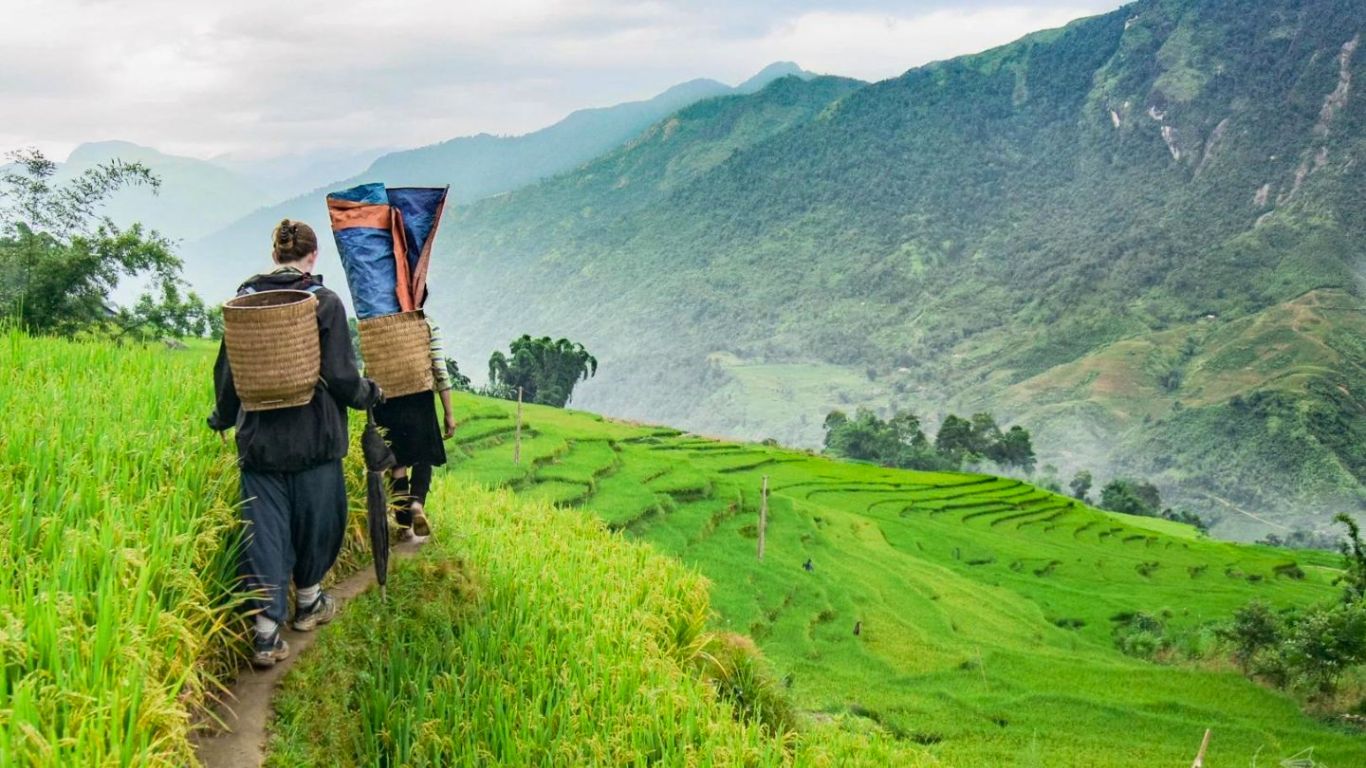
Participate in Sapa Festivals in January
The Gau Tao Festival
The Gau Tao Festival represents one of the most significant cultural celebrations for the H’mong people in Sapa during January. This three-day event typically occurs in late January, transforming villages into vibrant celebration spaces. Local families take turns hosting the festival, where village shamans perform traditional rituals to thank ancestors and pray for prosperity.
Visitors can watch traditional sports competitions, enjoy authentic H’mong music played on traditional instruments, and witness young people participating in courtship rituals through song and dance.
The Roong Pooc Festival
The Roong Pooc Festival brings together the Giay community in Ta Van village during early January. This celebration honors the Mother of Land deity and marks the beginning of the agricultural cycle. The festival features elaborate ceremonies where local priests perform rituals for good harvests, followed by community feasts featuring traditional dishes.
You can join in traditional games, watch folk performances, and experience the warm hospitality of Giay families who open their homes to guests during this special time.
Suggested itinerary in January in Sapa
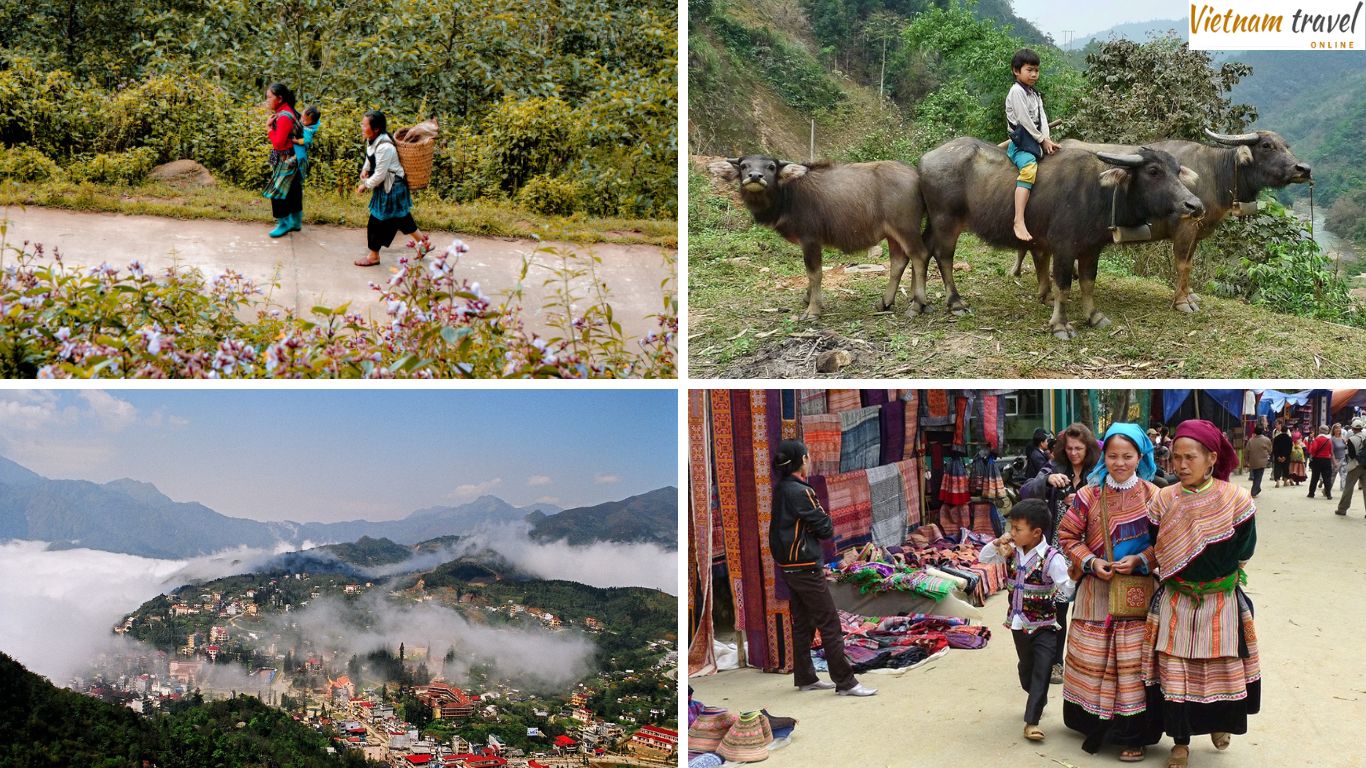
Day 1: Hanoi – Sapa – Cat Cat
Start your morning in Hanoi and take the drive to Sapa. The road winds through mountains, with plenty of spots to take photos. You’ll reach Sapa by lunch time and eat at a local restaurant. After checking in to your hotel, walk to Cat Cat village, home of the Black Hmong people. Here you’ll see traditional houses and the beautiful Hoang Lien National Park. Your evening is free to walk around Sapa town and try local food.
Day 2: Lao Chai – Ta Van – Giang Ta Chai
Your second day takes you through three different ethnic villages. Start at Lao Chai, where you’ll see rice terraces covered in morning mist. Walk to Ta Van village to meet the Dzay people and see ancient rock carvings. Have lunch with a local family and learn about their daily life. In the afternoon, walk through a bamboo forest to reach Giang Ta Chai, where the Red Dao people live. Each village shows you different houses, clothes, and traditions.
Day 3: Sapa – Hanoi
Use your last morning to visit Sapa Market or sleep in. The market sells local crafts, clothes, and food – perfect for souvenirs. After checking out, head back to Hanoi.
This winter journey through Sapa in 3 days represents a starting point for your northern Vietnam adventure. Our travel experts can customize every aspect of this itinerary to match your interests and travel style. Want to spend more time in the villages? Interested in photography-focused tours? Looking for luxury accommodations with premium heating systems? Our team can adjust the schedule, select different hotels, or add special experiences to create your perfect winter mountain escape. Contact our travel specialists by filling out this form or emailing us at vietnam@indochinavoyages.com to start planning your personalized Sapa adventure.
Combine Hanoi – Sapa – Halong Bay – Ninh Binh to experience the best Northern Charm Vietnam
January is the ideal month to visit Northern Vietnam since it has the best weather in the region. While Central and Southern Vietnam receive mild rain, the North greets you with cold, dry weather and beautiful skies.
An 8-day Northern Vietnam trip in January flawlessly captures the region’s features. You should spend 2-3 days experiencing Hanoi’s rich legacy, followed by two days in Sapa’s mountain towns, which are accessed by sleeper train. Next, spend a day seeing Ninh Binh’s spectacular limestone landscapes, followed by a memorable overnight cruise over Halong Bay’s magnificent seascape. For an overview of activities, an approximate cost, and some recommended hotels, see our proposed Northern Charm Discovery 8-day itinerary.
>>> Click here for more ideas about Vietnam package tours with updated prices!
Tips for visiting Sapa in January
What to pack:
- Warm jacket (waterproof if possible)
- Thick socks and waterproof boots
- Gloves and a warm hat
- Thermal underwear
- Scarf or neck warmer
- Portable charger (cold can drain phone batteries)
Local tips:
- Book hotels with good heating systems
- Start your day after 9 AM when the sun warms things up
- Carry cash – many small shops don’t take cards
- Try hot ginger tea from street vendors
- Take breaks in local cafes to warm up
- Book a hotel in the town center to avoid long walks in the cold
- Ask your hotel for extra blankets
Vietnam Travel Online hopes this travel blog will give you the perfect insight into Sapa in January to plan your perfect trip. If you want to find the best time to visit Sapa, check out this Best time to visit Sapa & Highlights by Season for more information!
Mo Nguyen – From Vietnam Travel Online


